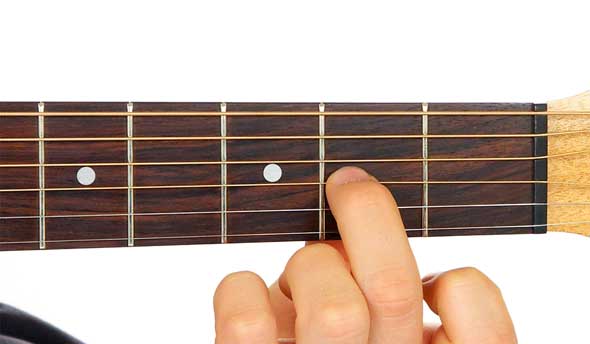
The Slide
This technique involves sliding between two notes on the same string while still fretting the string firmly against the fretboard. If played correctly the sound of the second note is produced artificially. The second note is not played with the right hand. The letter "S" and a straight line indicates a slide. If the line comes from below the number, slide from a lower fret.
If the line comes from above the number, slide form a higher fret. The number in the brackets is the suggested fret from which to slide from. In this situation the first of the two notes should contain no time value. In the following example a third type of slide is given. A straight line between two tab numbers indicates the first note should be held for a time value before sliding. The accompanying photos illustrate the first and most common type of slides, sliding from a lower fret to a higher fret.


Begin by playing the note on the second fret of the 3rd string.

Slide to fourth fret, still pressing firmly against fretboard.
The following example is a 12 Bar Blues progression in the key of A and uses the constant bass line throughout. It also features use of the slide, hammer-on and pull-off.




